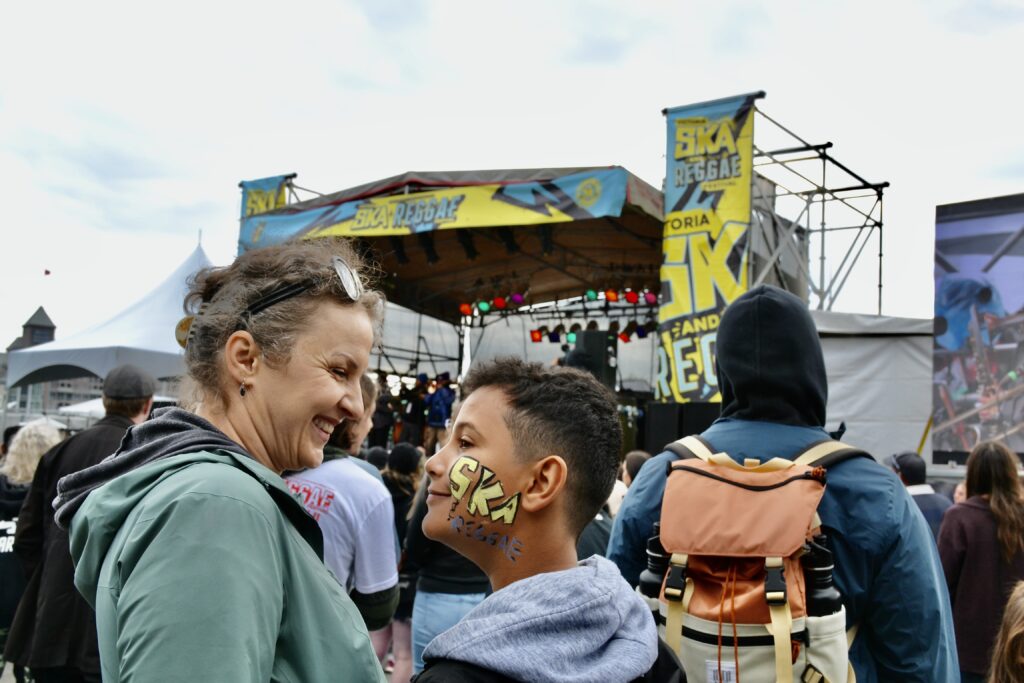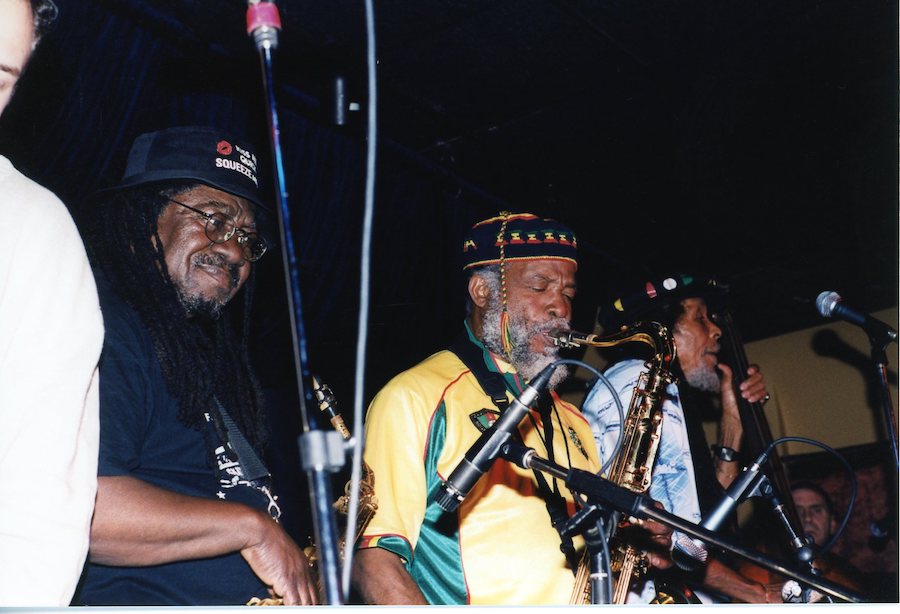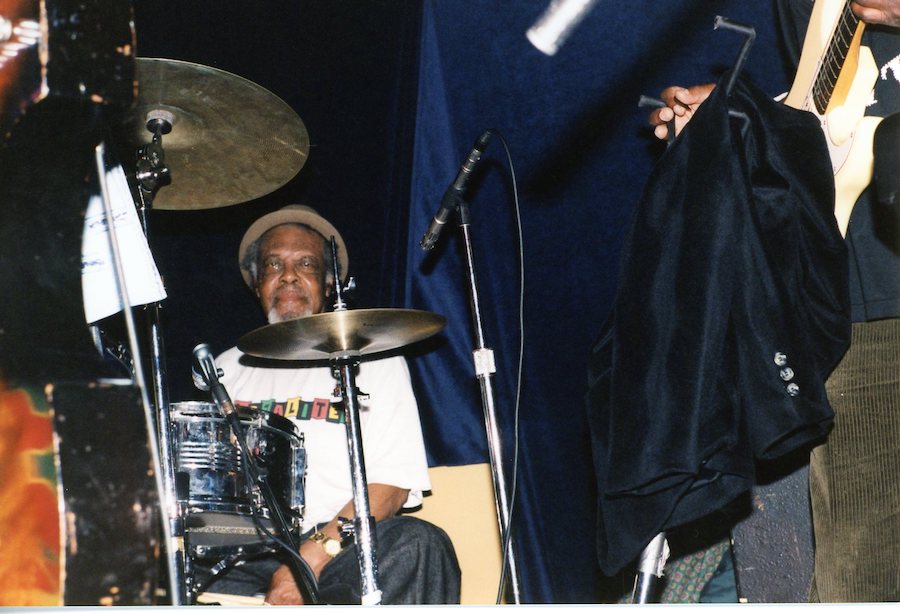
“I don’t stand for the black man’s side; I don’t stand for the white man’s side. I stand for God’s side.” – Bob Marley
In the mid-90s, I played keyboards and sometimes sax in a ska band in Vancouver, BC. Our bandleader, Andy, got us gigs at most of the popular clubs of the time – the Town Pump, the Starfish Room, Graceland and many others. We recorded a CD at In Time studios called Holiday on Hastings and were included on two compilation discs on The All Skanadian Club via Stomp Records based in Montreal and another compilation Land of the Bigfoot Ska on Simmerdown Records based in Oregon.
I wrote a research paper for a World Music course at SFU in 2010. The following was the conclusion to my essay.
For such a small country, the impact of Jamaican music is immense. Ska was the predecessor to reggae. Before Bob Marley, Peter Tosh and Bunny Wailer played reggae music, they were in a ska band.

They backed Bob Marley and the Wailers on the song Simmerdown. All have since passed away.

In the late 1950’s, ska became important in Jamaica, its rise to prominence coincided with independence in 1962. This literally and figuratively upbeat style of music found its way to England in the early 60’s and was revitalized there (called the second wave) in the late 1970’s. In the late 80’s, early 90’s the so called third wave of ska surfaced in the US and Canada and is still thriving as an international phenomenon today.
FACTORS THAT CONTRIBUTED TO THE UNIQUE SKA MUSIC GENRE
-the strong African cultures in Jamaica represented by the Yoruba, Ashanti and Bantu and the resulting slave uprisings and escapes that formed the Maroon society
-the cruelty and hands-off attitude of the British colonists who were a sort of outcast society in themselves and who were primarily interested in profit and not the well being of the Africans or their religious conversion
-the illiteracy and low economic status of the Africans which shifted focus to the development of musical skills
-the very independent Rastafarians
-the sound systems which provided music to the poor with no filters or restrictions and the DJ’s who were rewarded with instant feedback for their selections
-the Alpha Boys School and their brass band donation – many of the Skatalites attended. The musicianship learned here was very structured and knowledge of music theory was mandatory. The boys needed to know European classics before they could improvise.
-Mento – the calypso influence was strongest in the mento tradition. In any case, “International interest in calypso spurred local entrepreneurs …into recording mento. And these tentative efforts gave birth to the Jamaican recording industry.”
-American R & B from New Orleans which also had a voodoo culture
-the independent, non-corporate Jamaican recording industry
-the marriage of music and politics with politicians who were directly involved in the music industry and who used music as a political weapon – for example by literally giving the rude boys guns
-ska not becoming popular in the US when it premiered at the World’s Fair in New York City in 1964. There was a specific ska dance revealed at this time which looked nothing like the “skank” that emerged with the second wave rude boys in Britian.
-ska musicians wanting to stay in Jamaica once ska became popular instead of touring (though some did emigrate to England and the subsequent influence of rock steady and rude boys on blue beat, two-tone and skin head rock – which included a fashion component)
The number one reason I think Jamaican music has been so popular is because it is in English. Ska transcends racial, cultural, gender and generational biases and that may explain why this infectious, distinctive style of music keeps resurfacing in some unusual places (Germany, Japan, Mexico, Basque region, Argentina) and won’t go away even 60 or so years after it was introduced as the first specifically Jamaican music.
Stay tuned for more blog posts about ska music.
Leave a Reply